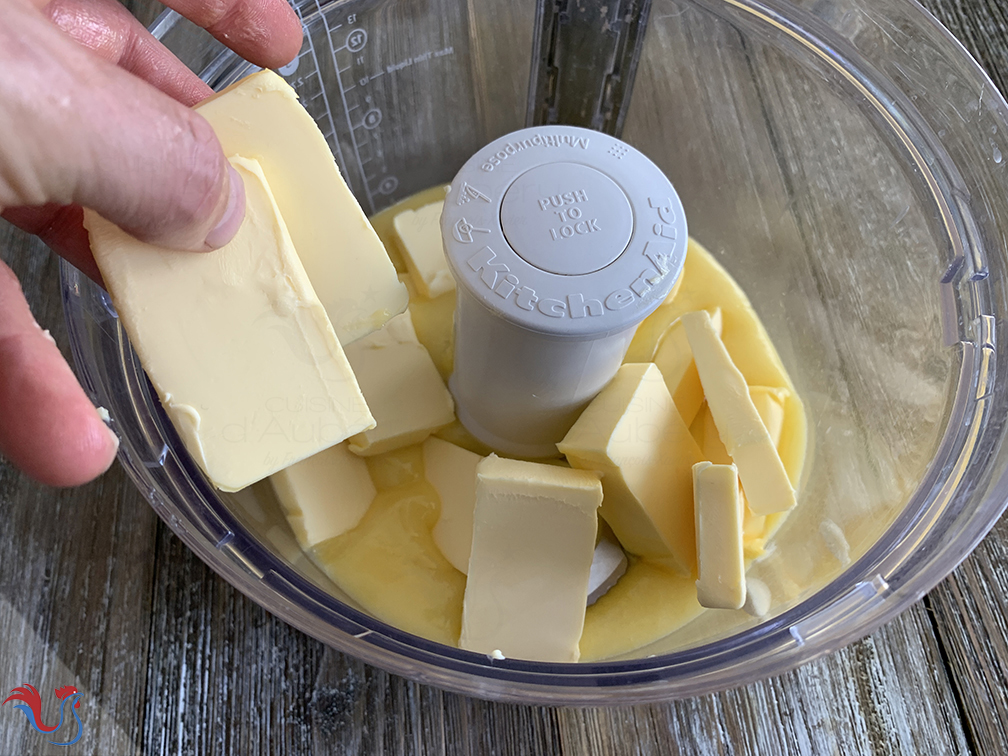French master Chef Jonathan Blot shows us the perfect recipe for a creamy and intense Lemon Custard for all desserts
This custard has never disappointed me in years. I tried many others, but this is the one that is the most satisfying

Easy to make, and perfect for all kinds of desserts, from tarts to cream cakes
Check some desserts using this custard, see HERE


About Crémeux, Jellies and Confits...
● ● A Crémeux is a cream thickened with Egg Yolks traditionally. Most often, a custard (crème anglaise), flavored, with sometimes gelatin if a liquid was added to the custard. The texture of a crémeux holds in a spoon, but is less firm than a pastry cream.
We use crémeux for flavors like Vanilla or Chocolate
A Confit
● is a jam, thickened thanks to Pectin.
Most of the times, a confit is a fruit purée, thickened by a mix Sugar and Pectin
A Compotée
● is a jam that is more liquid than a 'confit'
● A Jelly
● is a cream or a liquid that is thickened with Gelatin. The puree is cooked, the gelatin sheets are bloomed, and then added to the hot liquid (otherwise the gelatin won't work), and then dissolved.
Jellies are used for vanilla, chocolate and fruit

1. Start by zesting the Lemon Zests (3) : My favorite tool for this is the microplane
2. I strongly advise you to consider organic lemons, as we are zesting, the fruit skin needs no chemicals !
 Microplane Zester Grater
Microplane Zester Grater Zester Deiss
Zester Deiss
3. For the Lemon Juice (½ Cup or 125 g) : Cut and squeeze Lemons
4. Please do not substitute with bottled lemon juice ! Those already-squeezed juices come with preservatives and above all, their taste is just disgusting... your custard will not taste as good as squeezed fresh lemons !
 Orange and Citrus Squeezer
Orange and Citrus Squeezer Citrus Juicer
Citrus Juicer Mueller Juicer Ultra Power
Mueller Juicer Ultra Power
5. In a large mixing bowl, mix with wire whip the Eggs (4) and half of Sugar (⅓ Cup or 75 g)
6. In a saucepan goes the Lemon Juice (½ Cup or 125 g), the Lemon Zests (3) and the 2nd half of Sugar (⅓ Cup or 75 g)
7. Heat the saucepan until bubbles form at edges and then pour onto the bowl, while stirring the eggs mixture
8. Transfer the bowl content onto the saucepan
 Scanpan Saucepan
Scanpan Saucepan Calphalon Nonstick Sauce Pan
Calphalon Nonstick Sauce Pan DeBuyer Whisk
DeBuyer Whisk
9. Cook on medium heat while stirring : Keep stirring with a rubber spatula to avoid lumps
10. You want to cook slowly, and not on high flame. This takes a bit of time
 KitchenAid Silicone Spatula Set
KitchenAid Silicone Spatula Set Le Creuset Silicone Spatula
Le Creuset Silicone Spatula
11. At some point, the liquid thickens and becomes a custard. You should change utensils and use a wire whip, and whisk frantically, while scraping the bottom and sides to avoid lumps
12. Once the custard is thick enough (but not too much !), transfer onto a clean pan or a clean bowl
13. Wrap airtight (to avoid the custard to crust)
 USA Mini Sheet Warp Resistant Nonstick Baking Pan
USA Mini Sheet Warp Resistant Nonstick Baking Pan Silicone Baking Mat with Edges
Silicone Baking Mat with Edges Food Wrap
Food Wrap
14. Allow to cool down at room temperature, and wait until the temperature reaches 85 °F / 30 °C
15. We cool down to avoid the butter to be "cooked" (this would give a bad taste)
 Digital Laser Infrared Thermometer
Digital Laser Infrared Thermometer Matfer Pocket Digital Thermometer
Matfer Pocket Digital Thermometer
16. Once this temperature reached, pour onto a Food Processor (with chopping blades) ('robot coupe')
17. Add in the Butter (1 Cup or 200 g) (diced, and cold)
18. Give it a few pulses to allow the blades to mix the custard and butter
 KitchenAid Food Processor
KitchenAid Food Processor Food Processor Cuisinart
Food Processor Cuisinart
You will notice that the custard is still liquid
You need to place in the refrigerator (airtight wrapped with a plastic wrap), and the custard will thicken


 French Version
French Version 


















